
The debate between traditional marketing and account-based marketing has long been a dilemma for businesses that want account focus without losing scale.
Answer?
One-to-many ABM.
In this article, I will show you how to run it well.
I will also walk through how ZenABM supports a One-to-many ABM strategy.
Let’s go!
B2B teams are asked to do more with less, which is exactly why One-to-many ABM is rising.
Broad demand gen wastes effort on low-fit leads, while One-to-many ABM prioritizes the right accounts at scale.
This approach flips the model from lead volume to opportunity creation, focusing energy on the companies most likely to buy and expand.
Yes, this works in practice. 90% of organizations now run ABM, and 81% report higher ROI from ABM than any other motion, per an ITSMA report. That is the case for One-to-many ABM in a nutshell.
Some more notable reasons I vouch for One-to-many ABM:
Classic ABM was a small list and very bespoke.
One-to-many ABM uses automation, paid media, and smart targeting to deliver precision at scale.
You can run relevant campaigns to hundreds or thousands of target accounts without losing context.
ABM is not hype.
Teams see higher win rates, bigger deals, and faster cycles when they focus on best-fit accounts.
For example, personalized account-based ads drove a 72% lift in engagement in one study, and close to 90% of ad-engaged targets were more likely to become opportunities than non-targeted peers.
So yes, One-to-many ABM builds quality pipeline, not just clicks.
ABM compounds.
It may take months to show full effect, but the gains are durable.
Payscale ran ABM and saw a 6X revenue ROI in 7 months, plus a 500% jump in target-account traffic.
Many teams report ABM-sourced deals closing at 2 to 3 times higher win rates and much larger ACVs.
In summary, One-to-many ABM combines focus with reach. You direct resources to the accounts that matter, then use technology to scale and coordinate your presence. The result is an efficient funnel, deeper buying-committee engagement, and stronger revenue performance than spray-and-pray tactics.
Now, let’s break down execution step by step.
Every effective ABM program starts with alignment built for One-to-many ABM.
Get marketing, sales, and RevOps on the same plan from day one.
Define success in business terms, like pipeline or opportunity targets from named accounts in the next two quarters.
Agree that account-based metrics beat MQL counts for this motion. MQL volume will not reflect ABM impact.
Plan to track account engagement, stage progression, pipeline per account, win rate, and deal velocity. A shared scorecard ends the marketing versus sales tug of war.
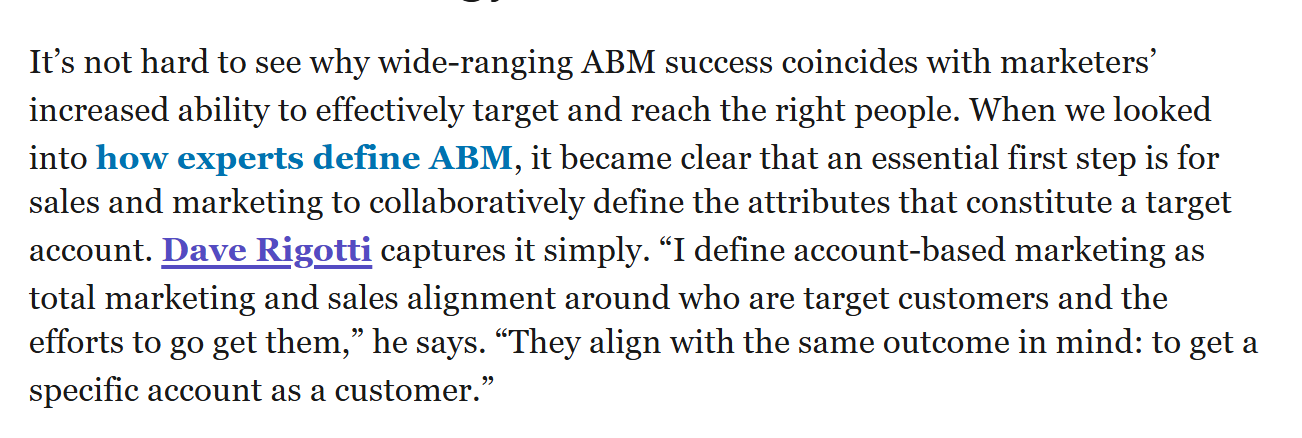
In lead gen, marketing tosses names over a wall. In ABM, both teams pursue the same accounts with coordinated moves.
Top organizations operate as Account-Based Everything, with all customer-facing functions focused on priority accounts.
To make that real:
Decide on your ABM tiers and scope.
Most mature programs blend all three.
For One-to-many ABM, define the scaled tier clearly, so resource allocation is sane. ICP fit and intent signals are typical gates for inclusion.
Set expectations that ABM requires orchestration and time.
Enterprise sales cycles run long, often 6 to 18 months, because committees and complexity slow decisions:
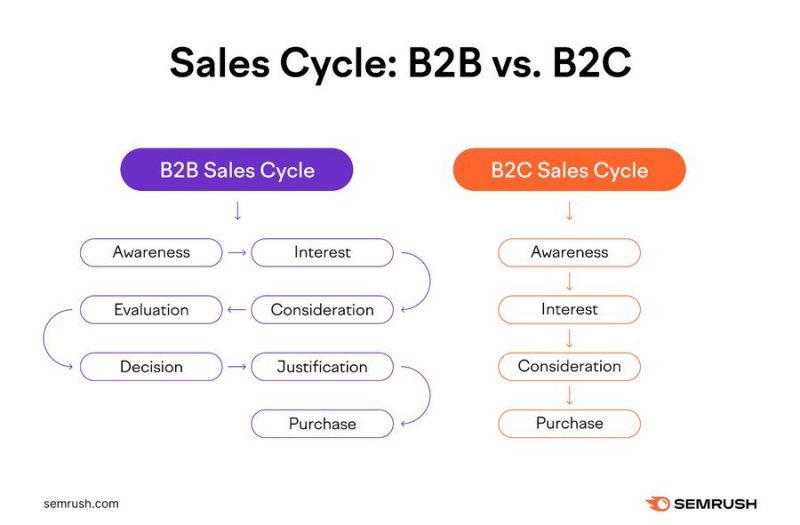
Give One-to-many ABM a proper runway.
One-to-many ABM requires investment in content, ads, tools, and sometimes data.
Plan budget per account or per cluster.
Work backwards from revenue goals to estimate target account volume, engagement needs, and media spend.
If you want 10 deals at $100K and expect a 10% win rate on targeted accounts, you might plan for about 100 accounts.
Use stage conversion benchmarks to check the math.
The Userpilot ABM team used Kyle Poyar’s ABX research to set stage conversion targets and then sized ad budgets and touches accordingly.
You can also use our free LinkedIn ad ABM budget calculator to size spend for scaled account coverage.
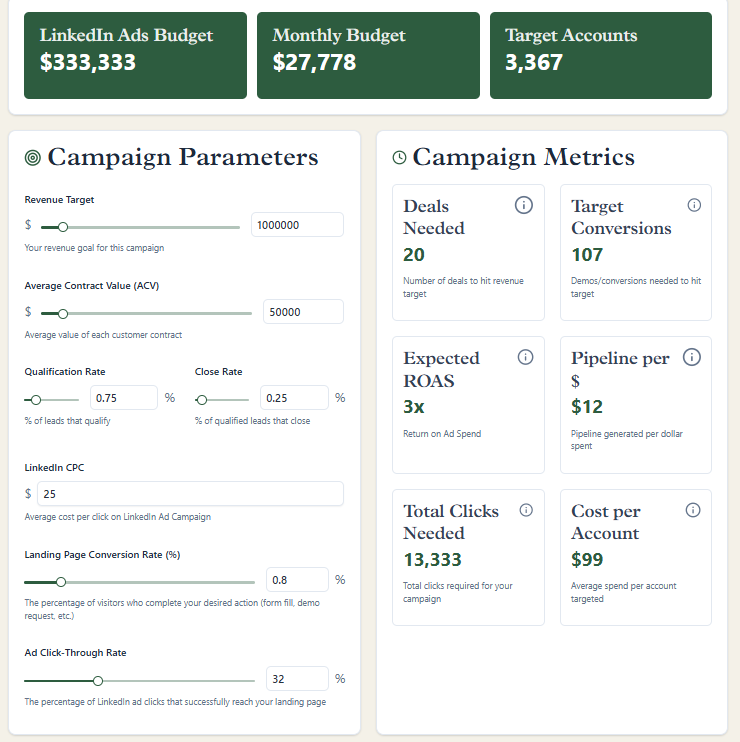
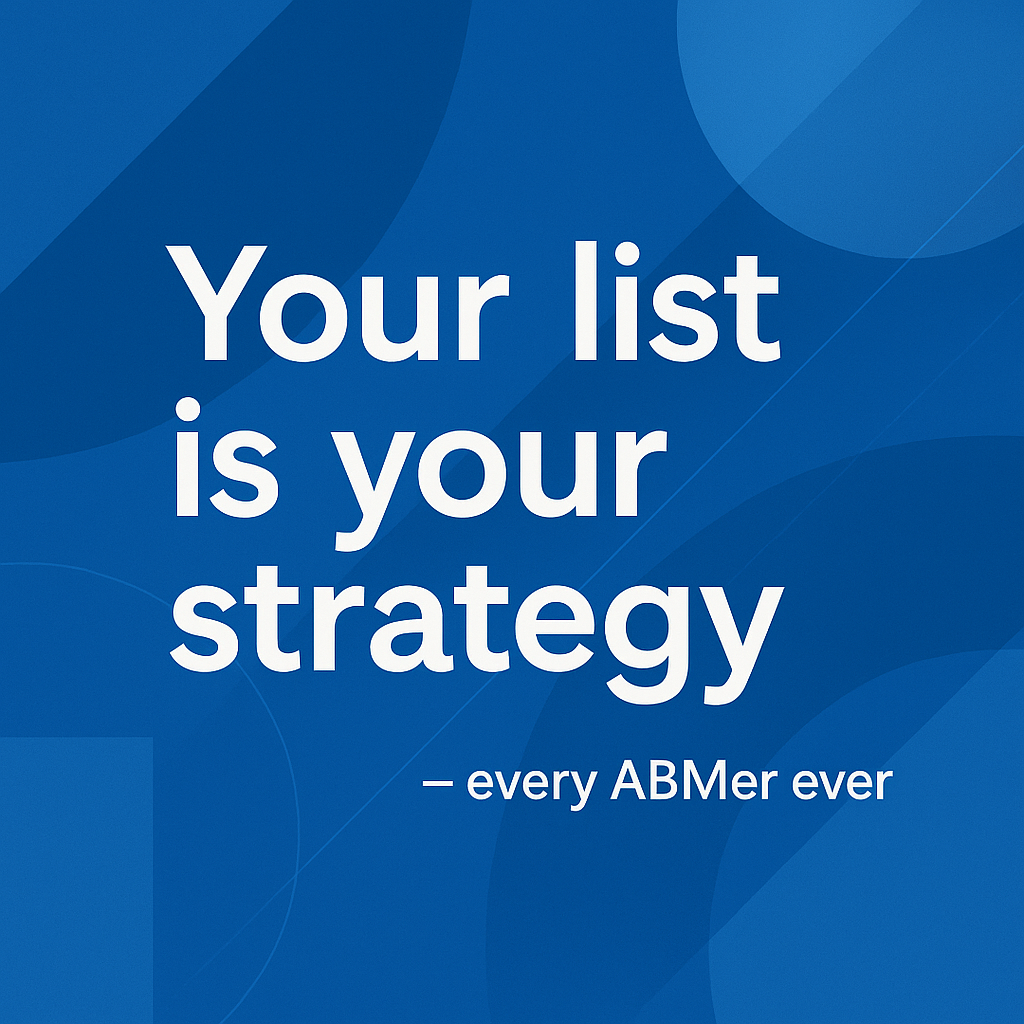
Picking the right accounts is the single most important decision you will make. Your list is your strategy.
Here is how to lock the ICP for One-to-many ABM.
Do more than firmographics.
Build your Target Account List from sources like ZoomInfo, LinkedIn Sales Navigator, Crunchbase, and Clearbit.
Choose quality over volume.
Start narrower for a pilot, then expand once the playbook works.
Get sales to validate. Field intel often improves the list.
Tier the list. Tier 1 gets white-glove 1 to 1, Tier 2 gets one to few, Tier 3 fits One-to-many ABM at scale.
Not every ICP-fit account is ready to engage.
Use intent and trigger signals to decide who gets in now.
Third-party intent from Bombora, 6sense, Demandbase, or RollWorks can show topic surges. Funding, hiring, and stack shifts are strong triggers.
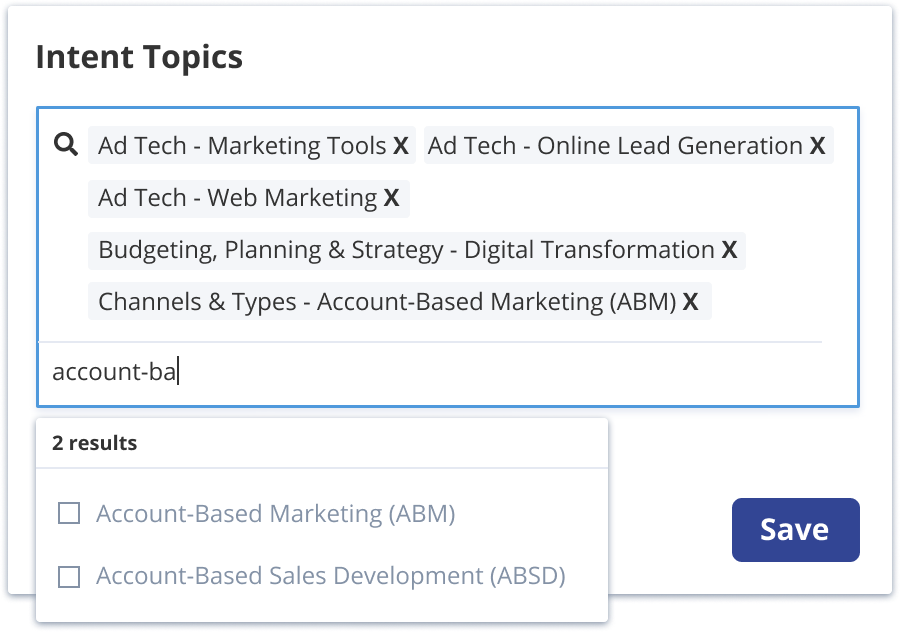
For a cleaner signal, ZenABM provides first-party, campaign-level intent that shows which LinkedIn ad engaged which company, with both quantitative lift and the qualitative theme behind the creative.
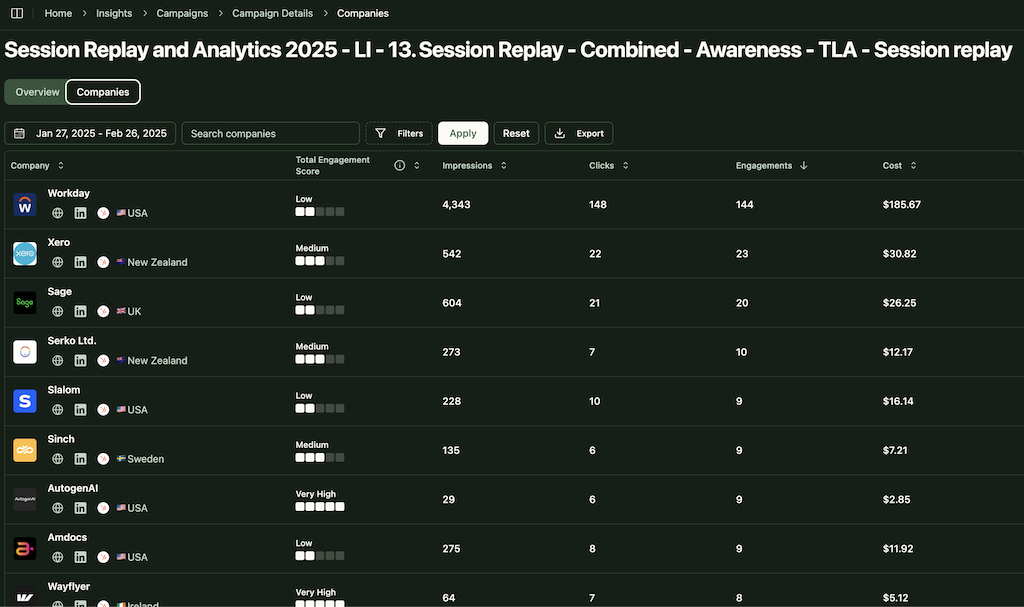

Best part?
All of this ad creative level engagement is pulled directly from the official LinkedIn Ads API.
One-to-many ABM needs a tight data stack.
Here are useful tools for data collection and prioritization:
| Stage | Tool examples | What it does | Typical filters or signals | Output | Notes |
|---|---|---|---|---|---|
| Define TAM and shortlist accounts | HG Insights, Keyplay, LinkedIn, ZoomInfo | Build lists from blended firmographic and technographic data | Industry, employee count, revenue band, tech stack, keywords | Ranked company list | HG Insights and Keyplay shape TAM. LinkedIn and ZoomInfo apply practical filters. |
| Overlay in-market intent | Bombora, 6sense, Demandbase intent | Identify accounts actively researching your topics | Topic surge, recency, velocity | In-market flags by account | Use to set near-term priority. |
| Capture first-party campaign intent and analytics | ZenABM | Pull company-level LinkedIn impressions, clicks, and engagement. Score accounts and map ABM stages. Push properties to CRM. | Campaign engagement by company, recent vs all-time engagement, qualitative intent tags | Prioritized account list with scores and ABM stages, CRM write-back | First-party signal shows which ad moved which company. No guesswork. |
| Pull contacts at target accounts | Snov.io, ZoomInfo, other email finders | Find stakeholder emails once accounts are selected | Seniority, function, role keywords | Contact list per account | Good for multithreading outreach. |
| Combine signals and score | Any spreadsheet or CRM model, ZenABM | Blend firmographics, technographics, intent, and reachability | Weighted scores, thresholds | Tiered account list with scores | Use ZenABM and CRM data to drive Tier 1, Tier 2, Tier 3 allocation. |
ABM should also include expansion and retention.
Large customers may be ready for cross-sell or renewal. ABM helps educate new divisions and defend against competitors.
Flag current customers in your TAL and create One-to-many ABM plays built for expansion.
One-to-many ABM is not blasting ads. It is scaled intelligence.
Research targets with firmographic and technographic data, news, and social signals. Map users, influencers, decision-makers, and budget owners. Tailor messaging for each role.
Persona insights from communities and LinkedIn add real-world nuance. Intent platforms help time outreach and shape offers.
Cluster by industry, growth stage, or shared pain so content feels relevant at scale. One-to-many ABM turns insight into clear narratives that travel across a large list.
With account and persona insights in hand, build content that proves you understand the prospect.
Start with a messaging matrix that maps value props to pain points. Align assets to funnel stages, from thought leadership at awareness to ROI tools and demos at consideration.
Personalize at scale with industry-specific landing pages, segmented ads, and light email tailoring. Reserve bespoke artifacts like mini pitch decks for your top clusters.
Quality is non negotiable. Decision-makers expect dense, credible material backed by data and third-party sources.
Use calculators, benchmarks, and microsites to stand out. A or B test messages and offers to learn what lands at the account level.
In ABM, content is not feature dumping. It is relevance, value, and proof delivered every time.
One-to-many ABM works when your message shows up everywhere your accounts spend time.
LinkedIn Ads are the flagship, with precise company and persona targeting and sequenced content. Display networks extend reach across industry sites.
Retargeting advances engagement. Email nurtures known contacts with context, then SDRs follow up when signals say the time is right.
Content syndication, sponsored newsletters, Reddit, and Quora can place your thinking where your buyers actually read.
Onsite personalization tools like Mutiny make the click-through feel built for them. Direct mail or gifts add a memorable offline touch.
The power is orchestration. Plan sequences, align themes, and monitor account-level engagement so every channel reinforces the same story and sales steps in at the right moment.
Here is how ZenABM supports One-to-many ABM on LinkedIn:
ZenABM pulls company-level LinkedIn ad engagement data, including impressions, clicks, and engagements, plus ad spend across all campaigns:


Beyond raw company metrics, ZenABM rolls up historic and current signals to score accounts and show awareness and engagement depth.

ZenABM also assigns ABM stages to each account based on engagement and CRM data, with thresholds you can customize:
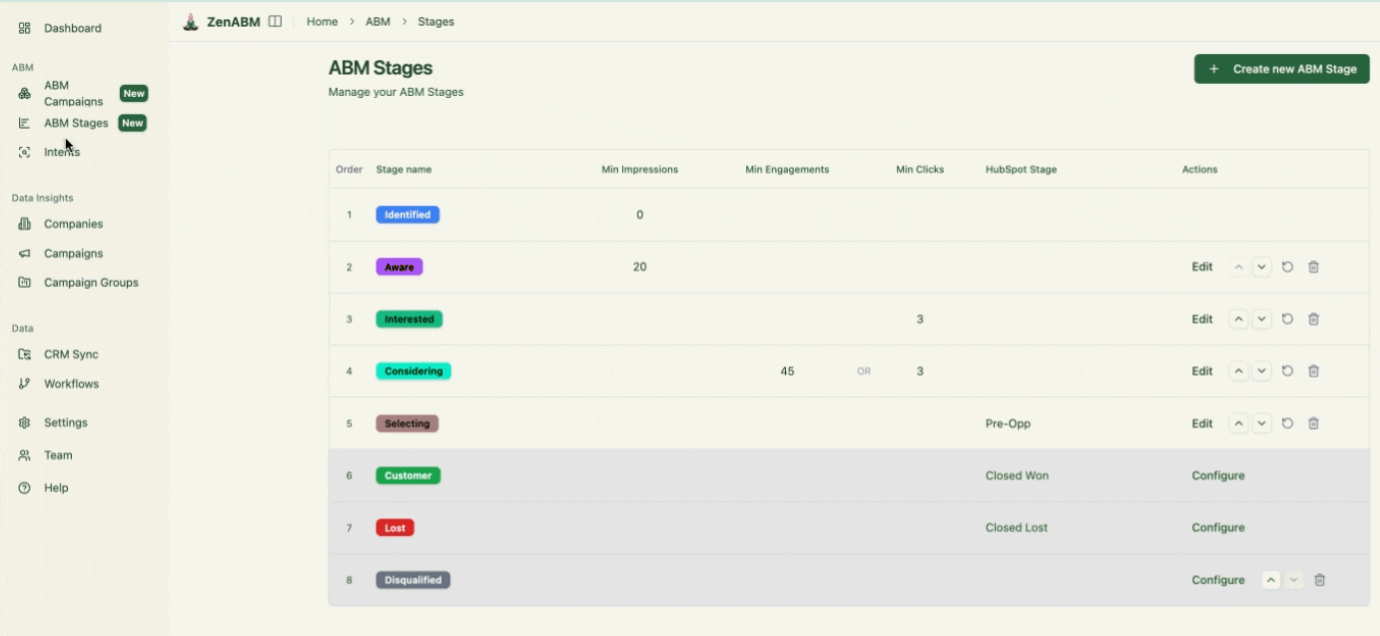
ZenABM routes hot accounts in the interested stage to your BDRs inside the CRM, so no manual checking or Slack chasing is required.

To keep sales and marketing in sync for One-to-many ABM, ZenABM pushes engagement to your CRM as company properties:

It also matches engaged companies to open deals and pulls deal values back to show impact.
With company matching and deal values, ZenABM provides ABM analytics and ROI dashboards.



Instead of paying for third-party signals, embed intent in your campaigns. Create distinct creatives for different buyer intents, tag them, and ZenABM shows which companies care about which topics:

ZenABM groups similar intents and writes them to your CRM, so BDRs know who is hot and what to discuss.

ZenABM shows how accounts move by stage and where they stall, so you can fix friction and improve conversion paths.
For advanced ABM workflows, ZenABM offers custom webhooks to connect with CRMs, MAPs, Clay, Apollo.io, and more.
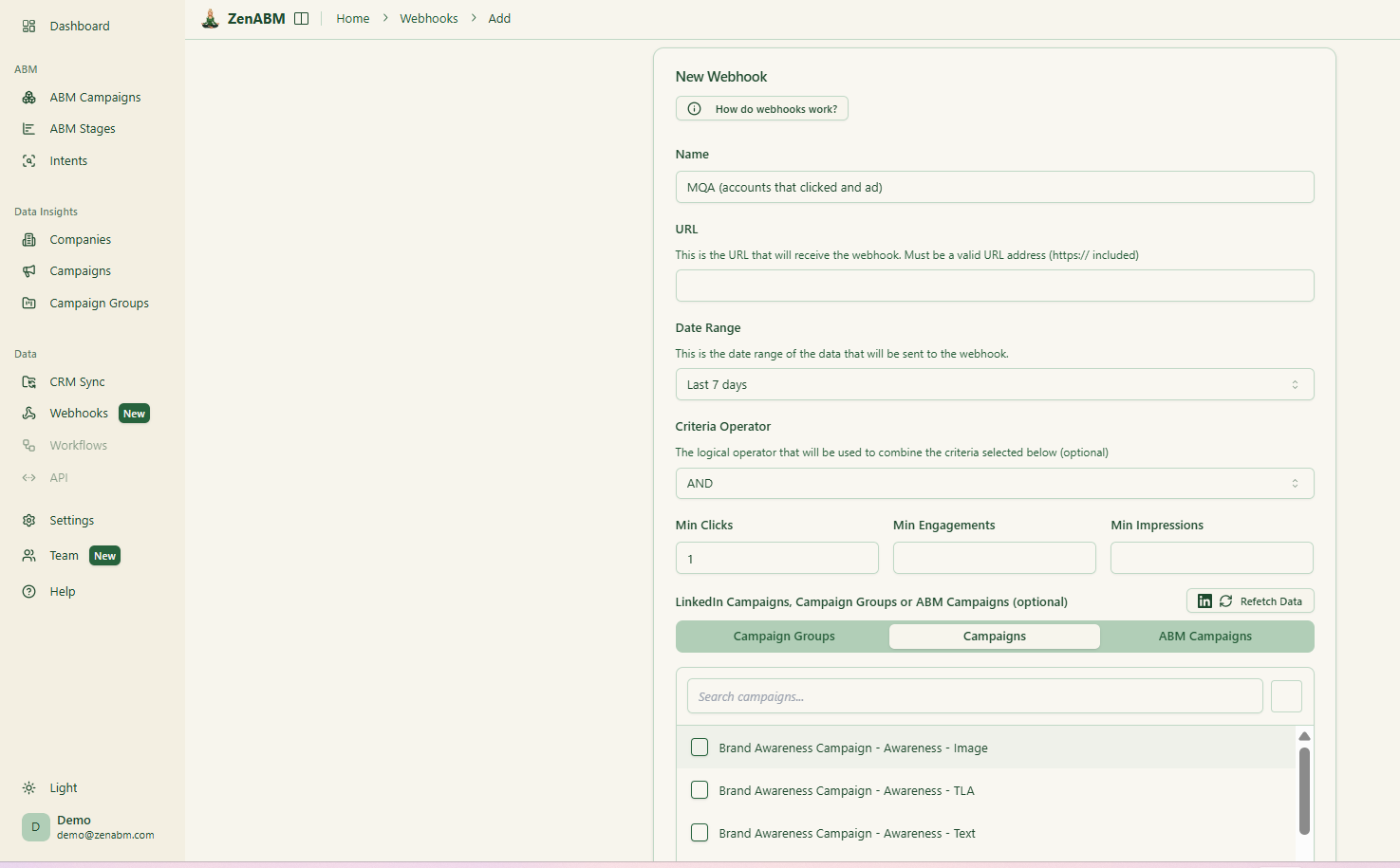
One-to-many ABM unifies focus and scale. You target the right accounts, tailor messages by persona and stage, and orchestrate touches across channels so buying committees get a single, consistent story. The payoff is a cleaner pipeline, faster cycles, and bigger deals than generic demand gen can deliver.
ZenABM brings first-party LinkedIn signals, ABM stage tracking, CRM sync, and plug-and-play attribution, so One-to-many ABM becomes measurable and repeatable.